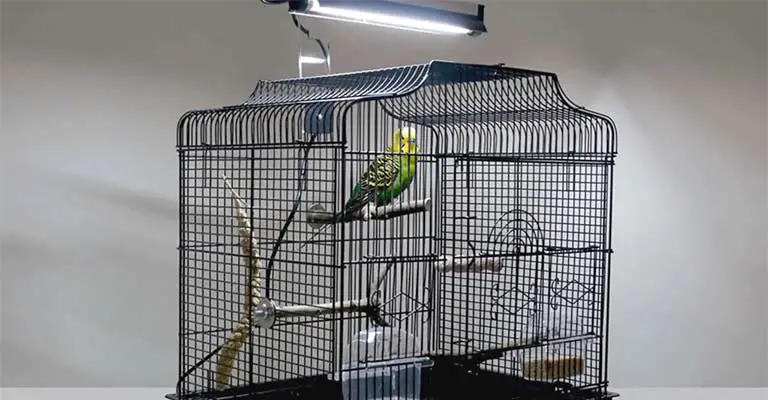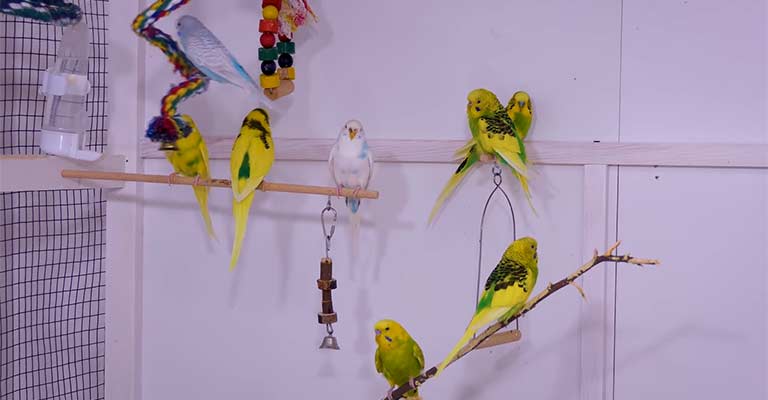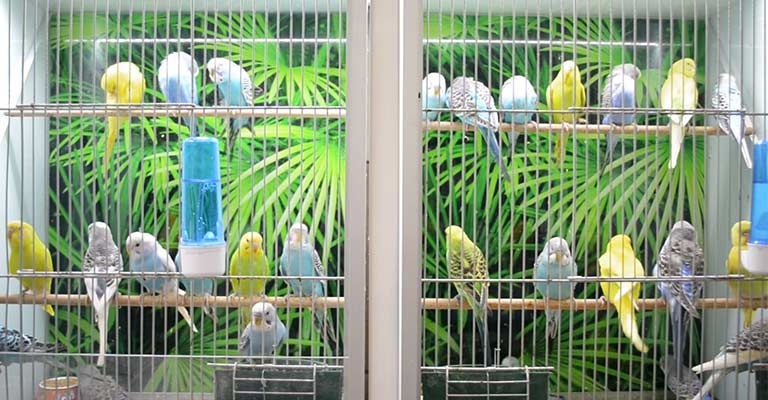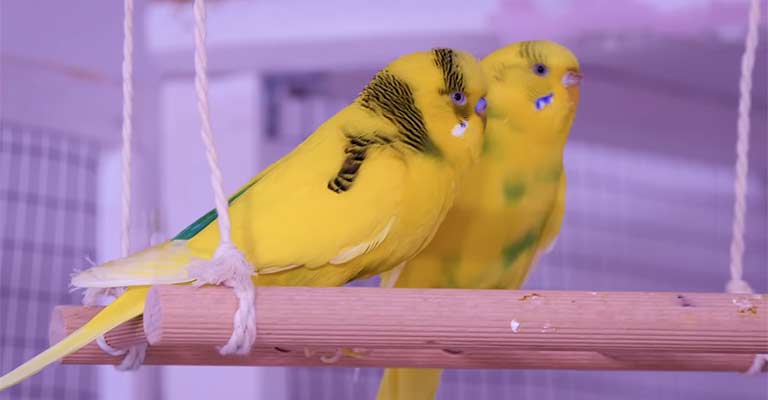In our quest for understanding, it becomes imperative to consider the evolutionary context of parakeets, whose visual and behavioral patterns have evolved over millennia.
The investigation extends beyond the mere illumination of cages; it reaches into the subtleties of avian physiology and psychology. Are LED lights bad for parakeets, or could they harbor unseen risks for our feathered friends?
Parakeets, as diurnal creatures, are profoundly influenced by light cues in their natural habitats. The spectrum and intensity of light play a crucial role in their hormonal regulation, sleep patterns, and overall well-being.
LED lights, with their diverse spectra and adjustable intensities, offer a nuanced study ground. We explore whether the adoption of LED lighting aligns with the inherent needs of parakeets or disrupts their circadian rhythms.
Together, let’s unravel the mysteries, distinguish between myth and reality, and pave the way for a brighter, bird-friendly future in the realm of parakeet ownership.

Are LED Lights Bad for Parakeets?
In this exploration, we delve into the intricate relationship between LED lighting and parakeets, considering factors such as spectrum, duration, and potential behavioral changes.
Let’s unravel the mysteries surrounding the use of LED lights and their impact on the well-being of these beloved avian companions.
Understanding the Light Spectrum
The spectrum of light emitted by LEDs plays a crucial role in their potential impact on parakeets. Unlike traditional incandescent bulbs, LED lights produce a more focused spectrum, often lacking certain wavelengths present in natural sunlight.
This discrepancy can influence the birds’ perception of their surroundings, potentially affecting their behavior, mood, and overall health.
The Importance of Natural Light Simulation
Parakeets, like many birds, thrive on exposure to natural light. Mimicking sunlight as closely as possible is essential for their well-being.
Some LED lights are designed to replicate natural light, providing a full spectrum that includes essential wavelengths. Opting for such lights can contribute to a more natural and stimulating environment for parakeets.
Duration of Exposure Matters

Beyond the spectrum, the duration of exposure to LED lights is a critical consideration. Parakeets follow natural circadian rhythms, and abrupt or prolonged exposure to artificial light during their resting hours can disrupt these patterns.
Striking a balance between providing adequate light and allowing for periods of darkness is crucial to maintaining their natural sleep-wake cycles and promoting a healthy lifestyle.
Behavioral Changes and Stress Factors
Observing changes in parakeet behavior is key to understanding the impact of LED lights. Birds are highly sensitive to their environment, and alterations in lighting conditions can induce stress.
Agitation, excessive vocalization, or changes in feeding and grooming habits may indicate that the lighting setup needs adjustment. Careful monitoring and gradual introductions to new lighting conditions can help minimize stressors.
Tailoring Lighting to Parakeet Preferences
Each parakeet is unique, and their response to lighting may vary. Some birds may thrive in a well-lit environment, while others may prefer dimmer conditions.
Paying attention to individual preferences and adjusting the lighting setup accordingly can significantly contribute to the overall well-being and happiness of your parakeet.
Expert Insights and Recommendations

Consulting with avian experts or veterinarians is a prudent step for parakeet owners seeking guidance on lighting choices. Professionals can offer tailored advice based on the specific needs and behaviors of individual birds.
Collaborative efforts between caregivers and experts ensure a holistic approach to creating an optimal environment that promotes the health and happiness of parakeets.
Determining the Ideal Duration of Darkness
The ideal duration of darkness for parakeets varies depending on factors such as age, individual preferences, and environmental conditions.
As a general guideline, providing 10 to 12 hours of uninterrupted darkness during the night is recommended. This ensures that parakeets receive sufficient rest while accommodating their natural sleep-wake cycles.
Does Red Light Bother Parakeets?

Parakeet enthusiasts often contemplate the impact of different lighting conditions on their feathered companions. One specific query that arises is whether red light affects parakeets adversely.
In this exploration, we delve into the intricacies of parakeets’ perception of red light, its potential effects on behavior, and considerations for incorporating it into their environment.
Understanding Avian Vision
To comprehend the impact of red light on parakeets, it’s essential to understand their unique vision. Birds, including parakeets, possess specialized photoreceptor cells that allow them to see a broader spectrum of colors than humans.
While human vision is trichromatic (detecting three primary colors), birds are tetrachromatic, enabling them to perceive ultraviolet light.
The Perception of Red Light
Parakeets perceive red light differently than humans. While red appears vibrant to us, it may appear less intense to parakeets due to their heightened sensitivity to shorter wavelengths, such as ultraviolet.
Red light, therefore, might not be as visually stimulating or disruptive to parakeets as other colors.
The Role of Red Light in Simulating Sunset and Sunrise
In their natural habitats, parakeets experience changes in ambient light during sunrise and sunset. The warm hues of red and orange dominate the sky during these times.
Introducing red light in the evening or morning can simulate these natural transitions, creating a more comforting and familiar environment for parakeets.
Potential Benefits of Red Light
Some advantages of arranging red light for your parakeets include:
Minimizing Disruption during Nighttime Observation
Red light is often recommended for observing birds at night without disturbing their sleep. Unlike other colors, red light is less likely to disrupt their natural sleep-wake cycles.
If you wish to interact with or observe your parakeet during the night, using a red light source may be a considerate choice.
Creating a Calming Atmosphere
Some parakeet owners report that red light creates a calming atmosphere in their birds’ living spaces. The warm and subdued glow of red light may contribute to a relaxed environment, especially during the evening when the day’s activities wind down.
Potential Drawbacks of Red Light
While red light is beneficial in some cases, it also has a few drawbacks. Red light can have the following disadvantages:
Limited Visibility h4
While red light may be less disruptive, it also offers limited visibility compared to white or full-spectrum lighting. Parakeets may find it challenging to navigate their surroundings effectively under red light, potentially impacting their activity levels and overall well-being.
Individual Variability h4
Each parakeet is unique, and their response to red light may vary. Some birds may be indifferent, while others may exhibit signs of stress or discomfort. Observing your parakeet’s behavior under red light and adjusting accordingly is crucial to ensuring their comfort.
Observing Parakeet Behavior under Red Light
To gauge the impact of red light on your parakeet, observe their behavior during its use. Signs of stress, agitation, or altered daily activities may indicate that the red light is causing discomfort. If these signs persist, consider adjusting the duration or intensity of red light exposure.
Incorporating Red Light Gradually
If you decide to introduce red light to your parakeet’s environment, it’s advisable to do so gradually.
Abrupt changes in lighting conditions can be stressful for birds. Start with short periods of red light exposure and monitor your parakeet’s response. If they seem comfortable, you can gradually extend the duration.
Seeking Professional Guidance
If you have concerns about incorporating red light or any lighting changes for your parakeet, consulting with avian veterinarians or experts is a prudent step.
They can provide tailored advice based on your parakeet’s specific needs, helping you strike a balance between creating a stimulating environment and ensuring the well-being of your feathered friend.
Understanding Parakeet Sleep Patterns
Parakeets, like many birds, have evolved to follow natural circadian rhythms influenced by daylight and darkness. In their native habitats, these birds experience periods of light and darkness corresponding to sunrise and sunset.
Therefore, mimicking these natural light conditions is crucial for maintaining their physical and mental health. In the intricate dance of lighting choices for parakeets, red light emerges as a nuanced option.
While it may have potential benefits, such as simulating natural transitions and minimizing disruption during nighttime observations, its limited visibility and individual variability must be considered.
FAQs
Are all LED lights harmful to parakeets, or are there specific types that are safer?
Not all LED lights are inherently harmful to parakeets. Some LED lights are designed to replicate natural sunlight, offering a full spectrum that closely mimics the beneficial wavelengths.
How can I tell if LED lights are causing stress to my parakeet?
Watch for behavioral changes in your parakeet, as stress may manifest through signs such as increased vocalization, agitation, changes in eating or grooming habits, or unusual hiding behavior.
Can parakeets be exposed to LED lights throughout the night without adverse effects?
Parakeets, like many birds, require periods of darkness for adequate rest. Prolonged exposure to LED lights during their natural sleeping hours can disrupt their circadian rhythms and lead to stress.
Are there any long-term health risks associated with prolonged exposure to LED lights for parakeets?
While the long-term effects of LED lights on parakeets are still an area of ongoing research, excessive or improper exposure may contribute to stress and potential health issues.
Can I transition my parakeet to LED lights gradually, or is an abrupt change acceptable?
Parakeets generally respond well to gradual transitions. Abrupt changes in lighting conditions may induce stress. If you plan to switch to LED lights, introduce them gradually over some time, allowing your parakeet to acclimate to the new environment.
Conclusion
While LED lights have become a staple in modern households for their energy efficiency and versatility, parakeet owners must exercise caution in their usage. The potential impact of LED lights on these sensitive birds cannot be overlooked.
As responsible caregivers, it’s advisable to strike a balance between providing adequate lighting for our living spaces and considering the natural needs of our feathered companions.
Paying attention to your parakeet’s reactions and, if necessary, consulting with avian experts can help tailor the lighting environment to better suit their preferences and health.
Ultimately, a thoughtful approach to lighting choices, coupled with a keen understanding of your parakeet’s behavior, will contribute to a harmonious living space where these delightful birds can thrive.
By staying informed and mindful, we can ensure that the glow of LED lights enhances our homes without compromising the happiness and health of our cherished parakeet companions.